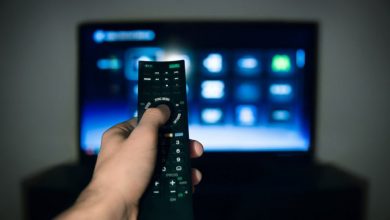cable and internet
Are cable and internet bundle prices rising?
It is not your imagination, Should you really feel as if you’re paying support. And it is possible you might have been”bundled” to an even more expensive monthly invoice.
Market research firm SNL Kagan accounts that cable companies’ average revenue per user climbed from $119.24 at 2010 to 161.12 this year — a growth of over 35 percent.
And while many customers assume that at times, Web and TV telephone services means they’re currently saving money, that may not be the situation.
“While dual play net and television packs have promotions for as low as $35 a month, and triple performs (including phone service) as low as $45 a month, many subscribers are paying more — the typical for Internet and tv is $132 per month, and the average spend three providers is $165 per month,” market research company Mintel stated in a report earlier this season.
A 2013 Mintel survey found that play readers on average paid over people who signed up using providers, while subscribers stored an average of $8.
Maybe as a consequence of statistics such as that, clients throughout the industry’s amount has been decreasing discovering a fall.
“Consumers are becoming very frustrated in the prices they are paying for double-play and triple-play providers,” a media analyst at Frost & Sullivan. The cable companies are definitely beginning to get worried that customers are only getting fed up.”
Mintel found that although 80 percent of families have pay TV of some type, that number drops by 10 percentage points for adults.
People within this age bracket have DVRs or telephones as well as except for all those over age 75, they have the lowest adoption rate of services of almost any age group in 47 percent.
The industry maintains that the increasing expense of TV programming and infrastructure investments induce them to increase prices, but others point to the industry high gains and also the near-monopoly that the largest businesses have in many areas of the nation as proof that the American consumer is getting the brief end of the rod.
By way of instance, they note that, in spite of a $36 million decrease from one year ago, Time Warner Cable nonetheless gained a gain of $463 million in its final quarter, and cable communications in Comcast (NBCUniversal’s parent company) had a 6.3 percent jump in earnings last quarter to $11.7 billion.
That is a reason for concern for providers. Time Warner’s senior vice president, controller, chief accounting officer and behaving co-CFO, advised investors about the organization’s latest quarterly conference call that triple-play clients contribute half the organization’s residential recurring monthly earnings, and they have a tendency to jump ship, or”churn,” more often.
In response to competition from flowing offerings, cable companies have been rolling out”scrawny bundles” of fewer TV stations for a lower cost, however, the media analyst, stated that these have limited appeal since they are inclined to exclude popular, but pricey, programming such as sports.
Prices on clients have been raising, a plan that analysts state may backfire.
Costs for cable support have been rising this year as subscriber foundations have diminished.
“The fastest way for cable companies to cultivate their earnings is bill more to the clients they have,” he explained. “Finally, this could prove counterproductive… (if) they choose to cut the cable completely.”
Time Warner and Comcast didn’t respond for comment to NBC News’ request.
But continue to be tethered to operators to get Web access, yet another place worth.
“What we are discovering is that customers from the U.S. pay more for less… compared to their peers across the globe,” explained senior policy counsel think tank New America’s Open Technology Institute.
In that a 2014 research , the institute found that home broadband connectivity at each rate was more costly on average from the U.S. than in Europe. Additionally, it discovered that important cities lag at pricing and rate in contrast to counterparts such as even, Hong Kong, Paris and Seoul Bucharest, Romania.
“A great deal of the breaks down to contest… although the ISPs prefer to assert the marketplace for broadband Web access is aggressive, when you break it down, it is not,” Morris explained. “This exacerbates low rate for high price.”
The absence of competition was underscored by a Federal Communications Commission report that discovered almost two-thirds of all Americans can simply get the fastest kind of broadband connectivity by one supplier, and one in five can not get download speeds of 50 megabits per second, or Mbps, whatsoever. In the lowest grade of broadband categorized from the FCC — 4Mbps of rate a quarter of families have no or one providers.
And that is to get a rate. “Four megabits per second is not adequate when one HD movie delivered to home or classroom necessitates 5Mbps of ability,” FCC Chairman Tom Wheeler stated in a demonstration last fall. Downloading a picture will take over 30 minutes.
Giving Americans access to a number of providers, new entrants or particularly civil such as Google’s Fiber job, needs providers be competitive on cost and also to invest in their own infrastructure, Morris explained.
“Among those coverages recommendations we have made through the years is to truly encourage more locally owned and managed networks,” she stated, adding that lots of attempts to make them are scrapped by recognized players struggle legislation and litigation.
The end result is a raw deal for customers. In each one these rankings we have done, we are apt to observe the U.S., particularly offerings in the traditional providers, middling at best.


